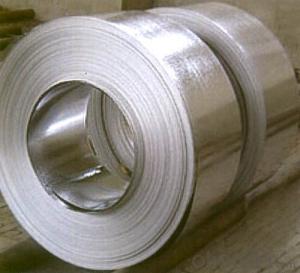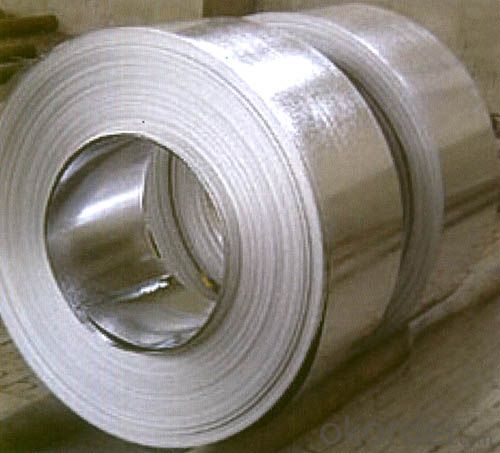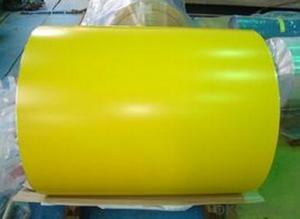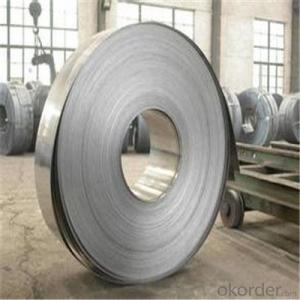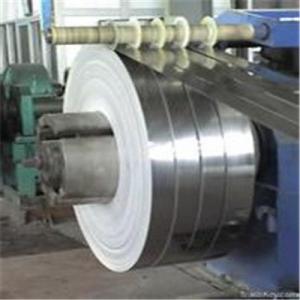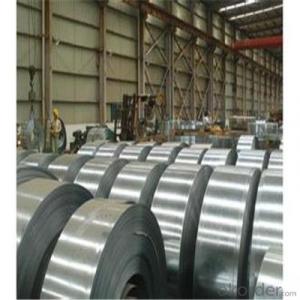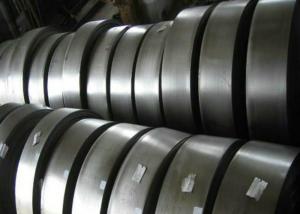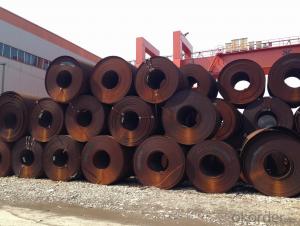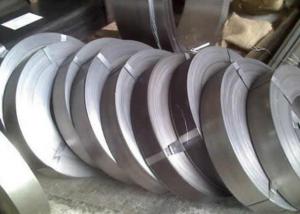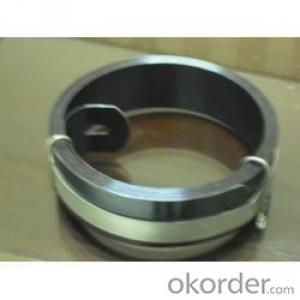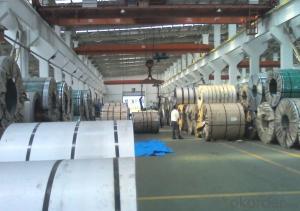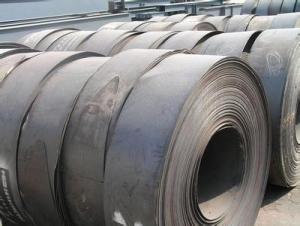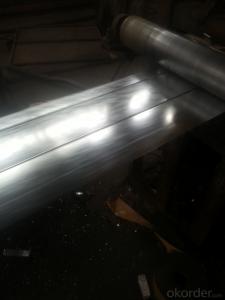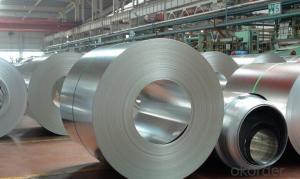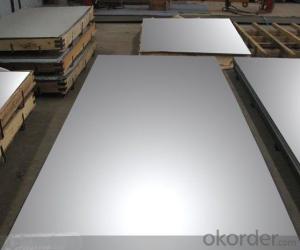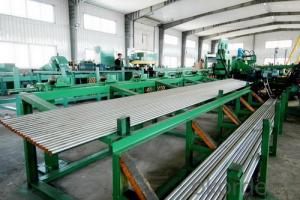Band Steel In Coil
- Loading Port:
- China Main Port
- Payment Terms:
- TT OR LC
- Min Order Qty:
- -
- Supply Capability:
- -
OKorder Service Pledge
OKorder Financial Service
You Might Also Like
Corresponding Steel Grade for Reference:
CHN, GB | JPN, JIS | GER, DIN |
50CrVA | SUP10 | 50CrV4 |
GBR, BS | FRA,FN | |
735A51 | 50CV4 |
Chemical Composition:
C | Si | Mn |
0.46~0.54 | 0.17~0.37 | 0.50~0.80 |
S | P | Cr |
≤0.030 | ≤0.030 | 0.80~1.10 |
Ni | Cu | V |
≤0.35 | ≤0.25 | 0.10~0.20 |
Mechanical Properties:
-Tensile Strength σb (MPa): ≥1274 (130)
-Yield Strength σs (MPa): ≥1127 (115)
-Elongation δ5 (%):≥10
-Percentage reduction of area: ψ (%): ≥40
-Hardness:
1, Hot rolled, ≤321HB
2, Cold drawn + Heat treatment: ≤321HB
-Norm of heat treatment:
1, Quenching: 850℃±20℃.
2, Cooled by oil.
3, Tempering: 500℃±50℃.
Usage/Applications
Mechanical Properties are good. 50CrVA have high hardenability. The element V reduces thermal sensitivity and improves the strength and toughness. The fatigue strength and yield point are high but the weld ability is bad.
-50CrVA is a nice material of spring. Usually it’s used as valve spring, piston spring and secure valve spring with big section that can bear much load. The working temperature is below 300℃
Packaging & Delivery
-Packing Detail: The products will be well packed.
-Delivery Detail: 30~45 working days after receive buyer’s T.T. or L/C.
- Q: How are steel strips priced in the market?
- Steel strips are typically priced in the market based on several factors, including the current demand and supply dynamics, the quality and specifications of the steel strips, and prevailing market conditions. These pricing factors are influenced by the cost of raw materials, production processes, transportation, and any additional value-added services. Market competition and global steel prices also play a significant role in determining the pricing of steel strips.
- Q: How do steel strips respond to different surface painting processes?
- Steel strips respond differently to different surface painting processes depending on the specific method used. The surface painting processes commonly used on steel strips include electroplating, powder coating, and liquid paint application. Electroplating is a process where a layer of metal is deposited onto the steel strip surface using an electric current. This method provides excellent corrosion resistance, as the metal layer acts as a protective barrier. However, it may not be suitable for all applications as it can impact the mechanical properties of the steel strip. Powder coating involves applying a dry powder to the steel strip surface, which is then heated to create a chemical reaction that forms a durable and protective coating. This process is known for providing excellent adhesion, resistance to chipping, scratching, and fading. It also offers a wide range of colors and finishes, making it popular in various industries. Liquid paint application involves the use of a liquid paint that is applied to the steel strip surface using different techniques such as spraying, brushing, or dipping. This method allows for a high level of customization in terms of colors, finishes, and textures. However, it may not provide the same level of durability and resistance as powder coating. Overall, the response of steel strips to different surface painting processes depends on factors such as the intended application, desired appearance, and required level of protection. It is essential to consider these factors and consult with professionals in the field to determine the most suitable painting process for steel strips in a specific application.
- Q: Are steel strips suitable for making aerospace components?
- Depending on the specific requirements and applications, steel strips can indeed be suitable for manufacturing aerospace components. This is due to the numerous advantages they offer, such as high strength, durability, and resistance to corrosion. These characteristics are crucial for aerospace components. Steel strips find utility in various applications, including structural components, fasteners, and landing gear parts. Nevertheless, it is essential to consider additional factors like weight, fatigue resistance, and temperature limitations while selecting materials for aerospace components. Depending on the specific aerospace application, different types of steel or alternative materials like aluminum or titanium might be more appropriate. Therefore, a comprehensive evaluation of the specific requirements is imperative before determining whether steel strips are suitable.
- Q: What is the length tolerance of steel strips?
- The length tolerance of steel strips varies depending on the specific industry and application requirements. Generally, the length tolerance for steel strips is specified by the manufacturer or customer in terms of a permissible range of deviation from the desired or nominal length. The length tolerance is typically expressed as a plus or minus value, indicating the maximum allowable deviation from the specified length. For example, a length tolerance of +/- 0.5mm means that the actual length of the steel strip can vary by up to 0.5mm in either direction from the desired length. The specific length tolerance for steel strips can be influenced by multiple factors, including the manufacturing process, the intended use of the strips, and the industry standards or regulations that apply. It is important to consult the relevant specifications and guidelines provided by the manufacturer or customer to determine the appropriate length tolerance for a specific application. In some cases, tighter length tolerances may be required for applications where precise dimensions are critical, such as in automotive or aerospace industries. Conversely, less stringent tolerances may be acceptable for applications where exact length is not as critical, such as in construction or general manufacturing. Ultimately, the length tolerance of steel strips is determined by the specific requirements of the application and should be carefully considered to ensure that the strips meet the desired specifications and performance criteria.
- Q: What are the different grades of steel used in steel strips?
- There are several different grades of steel commonly used in steel strips, each with its own unique properties and applications. Some of the most commonly used grades include: 1. Low carbon steel: This grade of steel has a carbon content ranging from 0.05% to 0.25%. It is known for its excellent formability, weldability, and versatility. Low carbon steel is often used in applications where strength and hardness are not critical, such as automotive components, construction materials, and consumer goods. 2. Medium carbon steel: With a carbon content ranging from 0.25% to 0.60%, medium carbon steel offers a balance between strength and ductility. It is commonly used in applications that require moderate strength and hardness, such as shafts, gears, and machinery parts. 3. High carbon steel: This grade of steel contains a carbon content ranging from 0.60% to 1.0%, providing excellent strength and hardness. High carbon steel is commonly used in applications where extreme hardness and wear resistance are required, such as cutting tools, springs, and knives. 4. Stainless steel: Stainless steel is an alloy that contains a minimum of 10.5% chromium, which provides excellent corrosion resistance. It is available in various grades, each with different levels of corrosion resistance, formability, and strength. Stainless steel strips are widely used in industries such as food processing, medical equipment, and automotive applications. 5. Galvanized steel: Galvanized steel is coated with a layer of zinc to provide enhanced corrosion resistance. It is commonly used in applications where rust prevention is crucial, such as outdoor structures, automotive parts, and electrical enclosures. 6. Alloy steel: Alloy steel is composed of multiple alloying elements, such as chromium, nickel, or molybdenum, in addition to iron and carbon. These additional elements enhance the mechanical properties of the steel, such as strength, hardness, and toughness. Alloy steel strips are often used in applications that require high-performance materials, such as aircraft parts, automotive components, and industrial machinery. Overall, the choice of grade depends on the specific requirements of the application, considering factors such as strength, hardness, corrosion resistance, and cost. Different grades of steel offer a wide range of properties, allowing for the selection of the most suitable grade for each specific application.
- Q: What are the different surface defects found in steel strips?
- There are several different surface defects that can be found in steel strips. Some of the common defects include: 1. Scale: Scale is a form of oxide that forms on the surface of steel when it is exposed to high temperatures. It appears as a thin layer of flaky material and can affect the appearance and quality of the steel. 2. Roll marks: Roll marks are caused by irregularities on the rolls used to flatten the steel during the manufacturing process. They appear as raised or depressed areas on the surface of the steel and can affect its flatness and appearance. 3. Scratches: Scratches are caused by mechanical damage to the surface of the steel, such as during handling or transportation. They can vary in size and depth and can affect the appearance and integrity of the steel. 4. Pits: Pits are small depressions or cavities in the surface of the steel. They can be caused by various factors, including corrosion, handling damage, or manufacturing defects. Pits can affect the appearance and structural integrity of the steel. 5. Edge cracks: Edge cracks are cracks that occur along the edges of the steel strip. They can be caused by various factors, including improper handling, overloading, or manufacturing defects. Edge cracks can affect the strength and integrity of the steel. 6. Surface contamination: Surface contamination refers to the presence of foreign materials on the surface of the steel, such as oil, grease, dirt, or paint. Contamination can affect the surface quality and may also lead to corrosion or other forms of damage. It is important to detect and address these surface defects in steel strips to ensure the quality and performance of the steel. Various inspection and quality control measures, such as visual inspection, non-destructive testing, and surface treatment techniques, are employed to identify and rectify these defects before the steel is used in various applications.
- Q: How are steel strips tested for decarburization?
- Steel strips are tested for decarburization using several methods to ensure the quality and integrity of the material. One common method is the use of visual inspection, where the surface of the steel strip is examined for any signs of decarburization such as discoloration or roughness. This visual inspection can be done manually or using automated systems. Another method is known as microhardness testing, which measures the hardness of the steel strip at different depths. Decarburization typically results in a decrease in hardness, so by comparing the hardness at different depths, it is possible to assess the extent of decarburization. Additionally, chemical analysis can be performed to determine the carbon content of the steel strip. Decarburization involves the loss of carbon from the surface layer, so by comparing the carbon content at different depths, the extent of decarburization can be determined. Metallographic examination is another technique used to test for decarburization. This involves preparing a cross-section of the steel strip and examining it under a microscope. The depth and severity of decarburization can be assessed by observing the presence of a decarburized layer and its thickness. Finally, non-destructive testing methods such as ultrasonic or eddy current testing can also be used to detect and assess decarburization in steel strips. These methods involve the use of sound waves or electromagnetic fields to detect any irregularities or changes in the material's composition. Overall, a combination of visual inspection, microhardness testing, chemical analysis, metallographic examination, and non-destructive testing is typically employed to comprehensively test steel strips for decarburization. This ensures that the material meets the required standards and is suitable for its intended application.
- Q: What is the typical hardness range for steel strips?
- The typical hardness range for steel strips can vary depending on the specific type of steel and its intended application. However, in general, steel strips usually have a hardness range between 20 and 60 on the Rockwell C scale (HRC). This range ensures that the steel strip possesses the necessary strength and durability for various industrial uses such as automotive components, construction materials, cutting tools, and machinery parts. It is important to note that the hardness range can be further customized based on the specific requirements of the end product.
- Q: How are steel strips processed for crimping?
- To ensure proper preparation for the crimping process, steel strips undergo a series of steps. Initially, the strips are typically cleaned to eliminate any dirt, oil, or contaminants that might be present on the surface. This ensures a smooth crimping process without any complications. After the cleaning stage, the steel strips are commonly passed through a crimping machine. The purpose of this machine is to shape the strips according to the desired form by applying pressure and creating folds or ridges along the length of the strip. The specific pattern and depth of the crimps may vary depending on the intended application and requirements. During the crimping process, it is vital to maintain consistent pressure and alignment to guarantee the proper shaping of the steel strips. This is typically achieved through the use of precise machinery and skilled operators who can carefully monitor and adjust the process as necessary. Once the crimping process is finished, further processing steps may be carried out on the steel strips depending on the specific application. This could involve additional cleaning, surface treatment, or coating to enhance the performance or appearance of the final product. In summary, the process of crimping steel strips involves cleaning them, feeding them through a crimping machine, maintaining consistent pressure and alignment, and potentially conducting additional processing steps. This ensures that the steel strips are adequately prepared and shaped for their intended use.
- Q: Can steel strips be used in the manufacturing of kitchen appliances?
- Yes, steel strips can be used in the manufacturing of kitchen appliances. Steel strips are often used for constructing the bodies and frames of kitchen appliances due to their strength, durability, and resistance to heat and corrosion.
Send your message to us
Band Steel In Coil
- Loading Port:
- China Main Port
- Payment Terms:
- TT OR LC
- Min Order Qty:
- -
- Supply Capability:
- -
OKorder Service Pledge
OKorder Financial Service
Similar products
Hot products
Hot Searches
Related keywords
